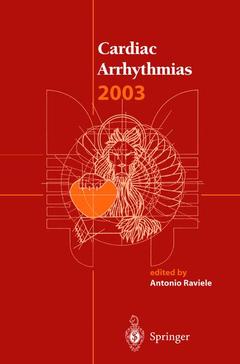The field of cardiac arrhythmias has been evolving so fast during the last years that scientific meetings are frequently necessary to present technological advances, to communicate results of relevant and innovative researches, to assess the impact of recently developed diagnostic and therapeutical tools, to discuss controversial aspects, and to reach a consensus on the most appropriate evaluation and management of specific problems. This is the main reason why in 1988 we started to organize a biannual International Workshop on Cardiac Arrhythmias. Since then many editions of the workshop have taken place and over the years the fame and popularity of the event have increased continuously. This book contains the Proceedings of the Eighth Edition of the Workshop th th held in Venice at the Fondazione Giorgio Cini from the 5 to the 8 of October 2003. During the meeting all the principal aspects of the different arrhythmias, from epidemiology to physiopathology, electrogenetic mechanisms, diagnosis, prognosis, treatment, pshycological implications and economic costs have been discussed among the numerous experts and participants.




